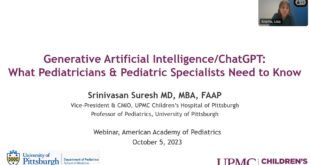Improving Access to Disability Benefits in Scotland
An independent review has highlighted the need to make access to Scotland’s adult disability benefits easier, even as forecasts indicate a significant rise in claims and associated costs. The report, commissioned by Scottish ministers, praised the Adult Disability Payment (ADP) as a “great foundation” that is “significantly more compassionate” than other benefits available across the UK. However, it also pointed out that many disabled individuals still find the system challenging to navigate, suggesting that eligibility criteria should be re-evaluated.
Currently, the number of people claiming ADP is expected to increase from 379,000 in 2024-25 to 703,000 by 2030-31. This surge will lead to an annual cost exceeding £5.4 billion, a figure that Scottish ministers are willing to accept in exchange for a more generous system. The ADP, introduced in 2022, serves as a cornerstone of the devolved social security agency, providing regular payments to help individuals cover the additional costs of living with a disability or long-term health condition, regardless of their employment status.
The payment replaces the Personal Independence Payment (PIP), with 99% of cases now transferred from the Department of Work and Pensions (DWP) to Social Security Scotland. While the actual amounts remain the same—£73.90 per week for daily living costs or £110.40 for enhanced support—the review conducted by Edel Harris, who has led various charity and care organizations, emphasized that the Scottish approach to assessments is “significantly more compassionate” than the DWP system it replaced. She noted that the process is “kinder in tone and more dignified in approach.”
A third of current ADP recipients are new applicants who had not previously received PIP or the Disability Living Allowance (DLA). This trend is expected to continue, with the number of people receiving ADP forecasted to surpass 700,000 by the end of the decade. That equates to over 12% of the Scottish population, although this figure pales in comparison to the 24% of Scots who have some form of disability or long-term health condition limiting their daily activities.
Despite the relatively small percentage, the financial implications are substantial. Total spending on social security benefits in Scotland was £5.3 billion in 2023-24, projected to reach £7.7 billion next year and £9.4 billion by 2030-31. ADP alone is expected to cost £5.4 billion by 2030-31, which is more than ten times the price of the Scottish Child Payment and over 30 times the Scottish winter fuel payment.
The growing gap between the rising cost of these benefits and the funding provided through the block grant from Westminster is also a concern. By the end of the decade, this gap is expected to reach £2 billion, forcing Scottish ministers to find alternative funding sources by cutting budgets or increasing taxes.
Edel Harris advocates for continued application for ADP, citing the economic value of the wellbeing impacts of disability benefits, which she argues outweigh the administrative costs. Her report includes 50 recommendations aimed at simplifying the system and making it more accessible. One key suggestion is to base eligibility on the real-life experiences of clients rather than a rigid list of activities. Currently, eligibility is determined by specific tasks such as preparing food, eating, washing, dressing, and communicating verbally. Some individuals have expressed frustration with this approach, describing it as “depressing, demoralising, and unfair,” and feeling as though they are “begging for help.”
The Scottish government plans to consider the report and provide a formal response in January 2026. However, its stance aligns with existing policies, as it has consistently opposed any cuts to disability benefits. Social Justice Secretary Shirley-Anne Somerville has described benefits as an investment in the people of Scotland, a sentiment reflected in the legislation underpinning Social Security Scotland.
In contrast, the UK government has sought to reduce the number of claimants to lower welfare costs, while maintaining fiscal rules that prevent increases in personal taxes or state borrowing. This highlights the divergent approaches between the Scottish and UK administrations, both of which face rising costs for working-age benefits amid tight budgets and weak economic growth.
Scottish ministers’ commitment to a generous system comes at a cost, funded by higher taxes. The Scottish tax system features six income tax bands, requiring higher earners to pay significantly more than those in England. Additional measures include reducing the public sector workforce by 0.5% annually and seeking efficiency savings in areas like Social Security Scotland and health boards.
As the government prepares its next budget, it must balance these financial challenges while responding to the review’s recommendations. The coming months will be crucial in determining how Scotland navigates the complex interplay between compassion, affordability, and sustainability in its approach to disability benefits.
 Info Malang Raya Its All About World News
Info Malang Raya Its All About World News




